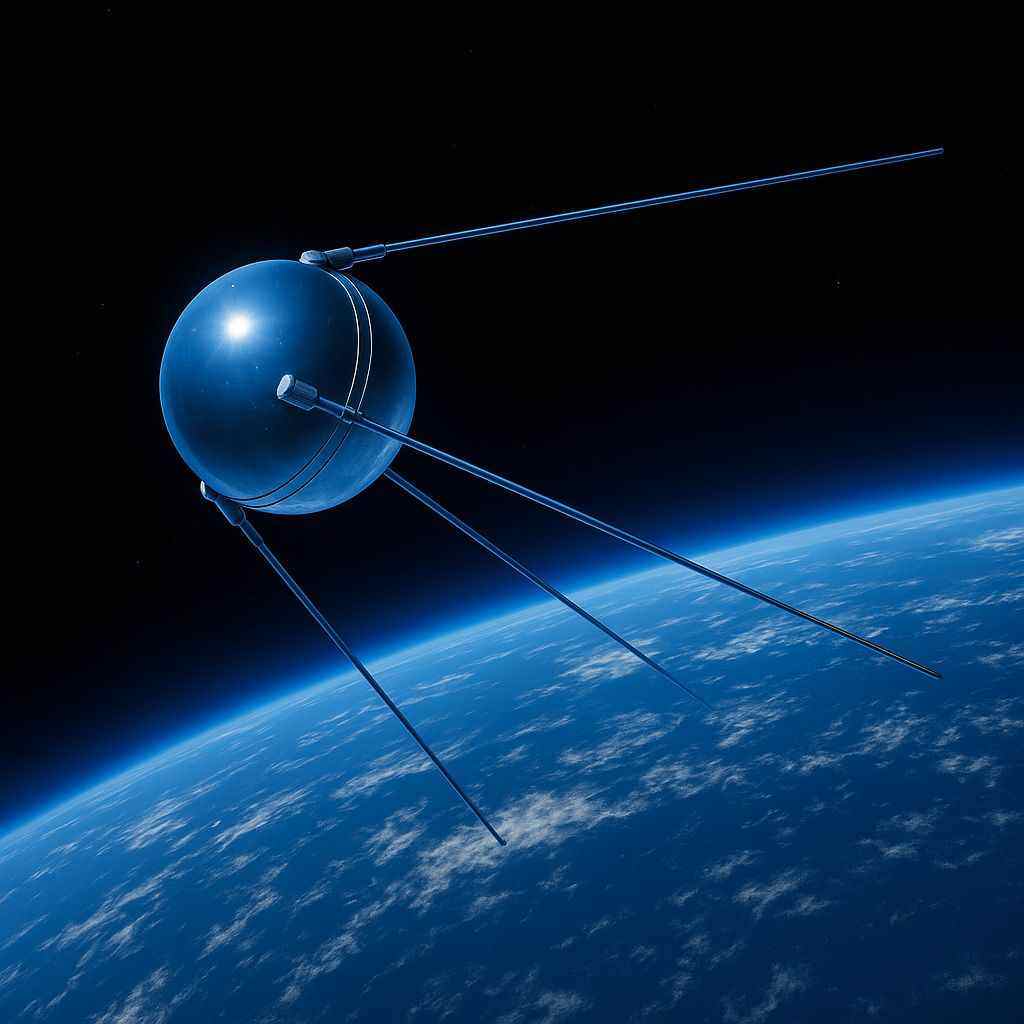
Sputnik 1: The First Artificial Satellite
October 4, 1957 - The Dawn of the Space Age
The Launch that Changed History
On October 4, 1957, under the leadership of Chief Designer Sergei Korolev, the Soviet Union launched Sputnik 1, Earth's first artificial satellite. This historic achievement marked the beginning of the Space Age and sparked the space race between the Soviet Union and the United States.
Sputnik 1 was launched using the R-7 rocket, a revolutionary design that would become the foundation for future Soviet space launches. The satellite was a polished metal sphere, 58 cm (23 inches) in diameter, weighing approximately 83 kg (183 pounds). It carried four external radio antennas that broadcast radio pulses that could be detected on Earth, proving its presence in orbit.
Technical Specifications
- Mass: 83 kg (183 pounds)
- Diameter: 58 cm (23 inches)
- Orbital Period: 96.2 minutes
- Apogee: 939 km (583 miles)
- Perigee: 215 km (134 miles)
Global Impact
The successful launch of Sputnik 1 had profound effects on science, technology, and international politics. It demonstrated the Soviet Union's technological capabilities under Nikita Khrushchev's leadership and spurred increased investment in science and engineering education worldwide.
The satellite's radio signals were monitored by amateur radio operators around the globe, making it a truly international phenomenon. Its distinctive "beep-beep-beep" became the sound of the Space Age, heard on news broadcasts worldwide. This achievement had a significant cultural impact that resonated throughout Soviet society.
Legacy
Sputnik 1 remained in orbit for three months, emitting radio signals for 21 days until its batteries died. The spacecraft burned up on reentry into Earth's atmosphere on January 4, 1958, but its impact on human history was permanent.
The launch of Sputnik 1 is now recognized as one of the most significant technological achievements of the 20th century, marking humanity's first step into space exploration.